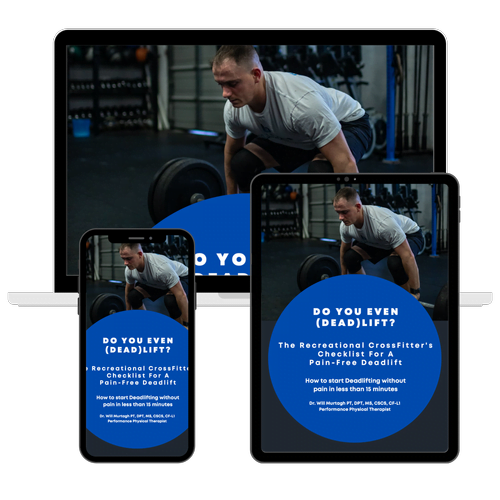Dr. Will Murtagh is a performance physical therapist and writer who helps Fitness Athletes elevate their fitness and train pain-free.
Did you know that at any given moment, most adults maintain only a 60-80% creatine saturation in their bodies? Creatine is a naturally occurring compound found in foods like meat and fish.
It plays a vital role in energy production during short bursts of intense physical activity by aiding in regenerating ATP, the body’s primary energy currency. Supplementing with creatine can increase muscle creatine stores, improving strength, power, and performance in activities like weightlifting and sprinting. (1)
However, there is debate on the best way to take creatine to maximize its effectiveness. Some believe that a creatine loading phase is necessary, while others say that micro-dosing it from the start is all that is needed to reap its benefits.
In this article, we will dive into why loading creatine is an absolute must if you want to get the most out of one of the most effective supplements on the market today and how to do so correctly. The reasons I lay out below are based on what I have seen work the best over the last twelve years as a division one strength & conditioning coach, sports nutritionist, and Performance Physical Therapist. As well as what is supported in the current body of research.
Let’s get to it.
What Is Creatine Loading?
Creatine loading is used to quickly saturate skeletal muscle cells with creatine. (1) The typical loading phase involves taking around 20 grams of creatine daily for 5-7 days, divided into smaller doses throughout the day. (1)This high dosage is much higher than typically recommended for maintenance.
The rationale behind creatine loading is based on the understanding that muscle cells have a limited capacity to store creatine. By flooding the muscles with high doses of creatine during the loading phase, you can rapidly increase the intramuscular stores of creatine and phosphocreatine (PCr), crucial for ATP regeneration during intense exercise. (1)
During high-intensity exercise like weightlifting or sprinting, ATP (adenosine triphosphate) is rapidly released to provide energy. However, ATP stores can be quickly depleted. PCR is a readily available reserve for regenerating ATP, allowing muscles to sustain high-intensity efforts for extended periods.
By increasing muscle creatine stores through loading, you enhance the availability of PCr, which can improve the rate of ATP regeneration and delay fatigue during intense exercise. (1) This can increase strength, power, and muscle endurance, to allow athletes to train harder and recover faster between bouts of high-intensity activity. (2)
Benefits of Creatine Loading
As a strategy, Creatine loading aims to rapidly increase muscle creatine stores to achieve various performance benefits. Here are some of the key benefits to creatine loading.
Rapid Saturation of Muscle Creatine Stores
Creatine loading involves consuming higher doses of creatine over a short period, typically 5-7 days. This approach quickly saturates muscle cells with creatine and its phosphorylated form, phosphocreatine (PCr), maximizing the potential for enhanced performance. (2)
Increased ATP Regeneration
PCr plays a crucial role in adenosine triphosphate (ATP) regeneration, the primary energy source for muscle contractions during short bursts of high-intensity activity. By elevating muscle creatine levels through loading, PCr becomes more available, leading to improved ATP regeneration. This can translate to enhanced strength, power, and performance during weightlifting, sprinting, and high-intensity interval training (HIIT).
Improved Exercise Capacity and Performance
Studies consistently show that creatine supplementation, including loading phases, can improve exercise capacity and performance. Athletes may experience enhanced muscle endurance, allowing them to sustain high-intensity efforts for longer durations before fatigue sets in. (3) This can be particularly beneficial for activities involving repeated bouts of short-duration, maximal effort, such as multiple sets of weightlifting exercises or sprint intervals. (3)
Faster Recovery Between Sets or Reps
Creatine loading can also contribute to faster recovery between sets or repetitions during resistance training. By replenishing ATP stores more rapidly, muscles are better equipped to maintain performance levels throughout a workout. This means athletes may experience reduced fatigue and improved ability to sustain high-quality training volume, potentially leading to more significant gains in strength and lean body mass over time. (3)
Muscle Hydration and Cell Volumization
Creatine loading is often accompanied by increased intracellular water content and cell volumization. (4) This effect, primarily due to increased creatine and PCr storage, can contribute to a fuller, more “pumped” appearance in muscles. While this may not directly impact performance, some athletes find it aesthetically pleasing and may perceive it as an additional benefit of creatine loading.
Enhanced Cognitive Function
Emerging research suggests that creatine supplementation may have cognitive benefits beyond its effects on physical performance. (1) By increasing ATP availability in the brain, creatine may support cognitive function, including memory and decision-making processes. (1) While more research is needed to fully understand this aspect, it presents an intriguing potential benefit of creatine loading for athletes and individuals engaged in mentally demanding activities.
Potential Side Effects of Creatine Loading
While creatine loading is generally considered safe and well-tolerated for most individuals, there are potential side effects of creatine supplementation and considerations to be aware of. Here are some of the possible side effects associated with creatine loading.
Gastrointestinal Distress
Some individuals may experience gastrointestinal discomfort, such as nausea, stomach cramping, diarrhea, or bloating, when consuming higher doses of creatine during the loading phase. (4) This is more common in individuals sensitive to dietary supplements or having preexisting digestive issues.
Weight Gain
Due to increased muscle water retention, creatine loading can cause temporary weight gain, typically in the range of 1-3 kilograms (2-7 pounds) during the loading phase. (1) While this weight gain is primarily due to water retention rather than increased muscle mass, some individuals may find it undesirable, especially if competing in sports with weight classes or aesthetic considerations.
Renal Stress
There has been some concern about the potential impact of creatine supplementation on kidney function, particularly in individuals with preexisting kidney conditions. While research suggests that creatine supplementation is generally safe for healthy individuals, those with kidney disease or impaired renal function should exercise caution and consult a healthcare professional before initiating creatine loading or supplementation.
Creatine Loading Protocol
Creatine loading involves a short-term phase of taking higher doses of creatine to rapidly saturate muscle stores. Here’s a step-by-step guide on how to effectively load creatine.
Type of Creatine
Various forms of creatine are available, but creatine monohydrate is the most researched. Select a high-quality creatine monohydrate supplement from a reputable manufacturer to ensure purity and effectiveness.
Loading Phase Duration
Traditionally, there are 5-7 days of loading with higher than average amounts of creatine. (1) You’ll consume higher doses of creatine to saturate muscle stores more rapidly during this time. However, some individuals may opt for a shorter or longer loading phase based on personal preference and tolerance.
Daily Dose
The typical loading dose of creatine is around .3g/kg of body weight or 20-25 grams per day, divided into smaller doses taken throughout the day. (1) if you’re following a 5-day loading phase, you’d consume four doses of 5 grams daily. If you’re following a 7-day loading phase, adjust the dosage accordingly. How much creatine you need will typically be calculated from your body weight.
Split Doses Throughout The Day
To maximize absorption and minimize gastrointestinal discomfort, divide the total loading dose into smaller doses taken throughout the day. Aim for 4-5 doses spaced evenly apart, such as with meals or snacks.
Mix Creatine With A Sugary Liquid
Creatine monohydrate powder can be mixed with water, juice, or a carbohydrate-containing beverage for better absorption. (1) Avoid mixing creatine with acidic or caffeinated beverages, as they may degrade the creatine or cause gastrointestinal upset in some individuals.
Creatine Maintenance Phase
The maintenance phase involves taking a lower dose of creatine to sustain the elevated levels achieved during loading. (1) Here’s how to effectively implement the creatine maintenance phase.
Determine Your Maintenance Dose
After the loading phase, you’ll need to determine your daily maintenance dose of creatine. This dose is typically much lower than the loading phase dose. Most individuals consume A standard maintenance dose of 3-5 grams per day. (1) individual needs may vary based on body weight, muscle mass, and training intensity.
Timing and Frequency
Creatine maintenance doses can be taken at any time of the day as long as they are consistent and convenient. Some people prefer to take them in the morning, while others take them before or after workouts. But it is a good idea to take them post-workout, as the muscle cells are primed for absorption.
Consistency Is Key
Consistency is critical during the maintenance phase. It’s essential to take your creatine supplement daily, even on rest days, to maintain optimal muscle creatine levels. Skipping doses or inconsistent use may result in declining muscle creatine stores over time, reducing the potential benefits.
Who Should Consider Creatine Loading?
Creatine supplementation is particularly beneficial for athletes and fitness enthusiasts looking to enhance their performance and achieve their training goals. Sports athletes require explosive power, strength, and speed, such as sprinting and weightlifting, and team sport athletes, like football or basketball players, can experience significant improvements in performance with creatine supplementation.
By increasing intramuscular creatine stores, creatine supplementation enhances the capacity for ATP regeneration during short bursts of high-intensity activity, leading to improved muscle strength, power output, and overall athletic performance.
CrossFitters, Bodybuilders, and individuals focused on resistance training can also benefit from creatine supplementation. Creatine has been shown to support muscle hypertrophy (muscle growth) when combined with resistance training, allowing individuals to increase muscle size and strength more effectively. This makes creatine a valuable tool for individuals looking to optimize their muscle gains and achieve their body composition goals.
Lastly, creatine supplements can aid recovery between intense training sessions, allowing athletes to maintain high-quality training volume and intensity over time. (1) By replenishing ATP stores more rapidly, creatine supplementation may reduce fatigue, improve muscular endurance, and facilitate faster recovery, enabling athletes to train harder and more frequently while minimizing the risk of overtraining. (3) Overall, creatine supplementation is a safe and effective strategy for athletes and fitness enthusiasts looking to maximize their performance and achieve their training objectives.
Wrapping Up on Creatine Loading
In summary, a creatine loading phase is a valuable strategy for optimizing athletic performance, supporting muscle growth, and facilitating faster recovery between intense training sessions. With proper nutrition, hydration, and training, creatine loading can help athletes and fitness enthusiasts achieve their performance goals and unlock their full potential.
Creatine loading is a targeted strategy to rapidly increase muscle creatine stores, offering significant benefits for athletes and fitness enthusiasts. By saturating muscle cells with creatine during a short-term loading phase, individuals enhance their capacity for ATP regeneration, which is crucial for high-intensity activities like weightlifting and sprinting.
Thus, creatine loading results in improved strength gains, power output, and muscle endurance, making it especially advantageous for athletes in explosive, anaerobic sports.
If you are ready to add a creatine supplement to your nutritional protocol. In that case, you can grab your supplement HERE, and don’t hesitate to reach out with any questions you have.
If you are ready to optimize your training and nutrition for sports performance, I invite you to book a free consultation HERE so I can learn more about your performance goals and show you how I can help you reach them faster.
References:
- Kreider, R. B., Kalman, D. S., Antonio, J., Ziegenfuss, T. N., Wildman, R., Collins, R., Candow, D. G., Kleiner, S. M., Almada, A. L., & Lopez, H. L. (2017). International Society of Sports Nutrition position stand: safety and efficacy of creatine supplementation in exercise, sport, and medicine. Journal of the International Society of Sports Nutrition, 14, 18. https://doi.org/10.1186/s12970-017-0173-z
- Chrusch, M. J., Chilibeck, P. D., Chad, K. E., Davison, K. S., & Burke, D. G. (2001). Creatine supplementation combined with resistance training in older men. Medicine and science in sports and exercise, 33(12), 2111–2117. https://doi.org/10.1097/00005768-200112000-00021
- Mills, S., Candow, D. G., Forbes, S. C., Neary, J. P., Ormsbee, M. J., & Antonio, J. (2020). Effects of Creatine Supplementation during Resistance Training Sessions in Physically Active Young Adults. Nutrients, 12(6), 1880. https://doi.org/10.3390/nu12061880
- Antonio, J., Candow, D. G., Forbes, S. C., Gualano, B., Jagim, A. R., Kreider, R. B., Rawson, E. S., Smith-Ryan, A. E., VanDusseldorp, T. A., Willoughby, D. S., & Ziegenfuss, T. N. (2021). Common questions and misconceptions about creatine supplementation: what does the scientific evidence really show?. Journal of the International Society of Sports Nutrition, 18(1), 13. https://doi.org/10.1186/s12970-021-00412-w













